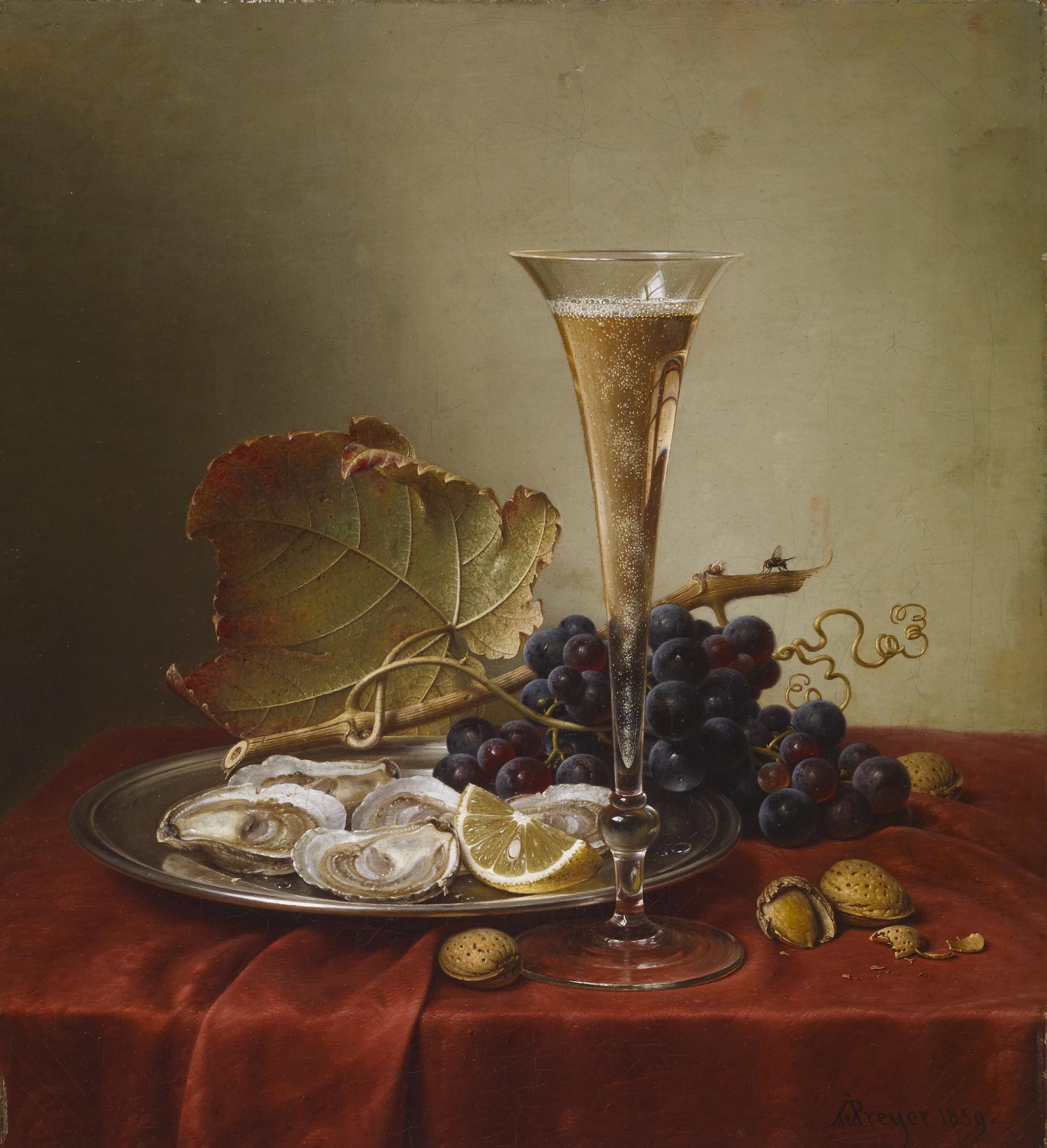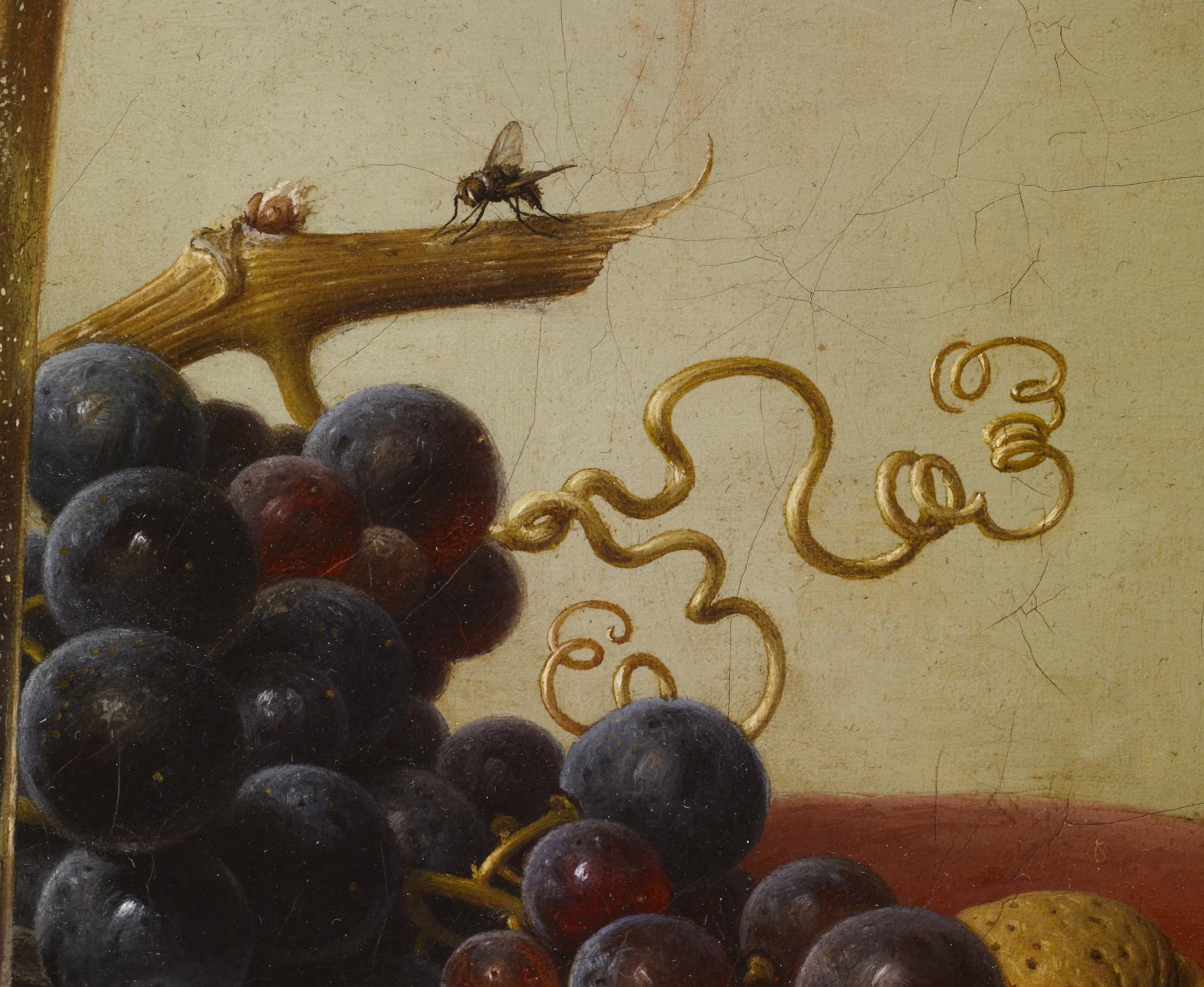Still Life
(18th and 19th Centuries )
On a table covered with a red cloth are a slender glass of sparkling wine, a silver salver bearing oysters, a slice of lemon, a bunch of purple grapes still attached to a sprig of vine, and several almonds. Preyer specialized in wonderfully detailed still lifes, such as this one, and looked back to Dutch Old Master paintings, drawing on their unique compositional elements and range of rich and cool colors. He even employed similar "vanitas" motifs, such as the housefly perched on the stem of the vine, and the inclusion of bubbles: ephemeral symbols of life’s transience. Preyer's paintings were particularly popular with collectors in the United States. William T. Walters purchased this painting for his growing collection of European art around the middle of the 19th century.
Inscription
Provenance
Provenance (from the French provenir, 'to come from/forth') is the chronology of the ownership, custody, or location of a historical object. Learn more about provenance at the Walters.
William T. Walters, Baltimore, prior to 1878, by purchase [from the artist]; Henry Walters, Baltimore, 1894, by inheritance; Walters Art Museum, 1931, by bequest.
Exhibitions
| 1996 | To Arrest the Ravages of Time: Caring for Art at the Walters. The Walters Art Gallery, Baltimore. |
| 1994 | Artful Dining: The Exhibition. The Walters Art Gallery, Baltimore. |
Conservation
| Date | Description | Narrative |
|---|---|---|
| 1/26/1961 | Examination | examined for condition |
| 4/20/1978 | Treatment | varnish removed; coated |
| 7/1/1994 | Treatment | surface cleaned; coated |
Geographies
Germany (Place of Origin)
Measurements
H: 14 3/16 x W: 12 11/16 in. (36 x 32.2 cm)
Credit Line
Acquired by William T. Walters, before 1878
Location in Museum
Not on view
Accession Number
In libraries, galleries, museums, and archives, an accession number is a unique identifier assigned to each object in the collection.
In libraries, galleries, museums, and archives, an accession number is a unique identifier assigned to each object in the collection.
37.139














